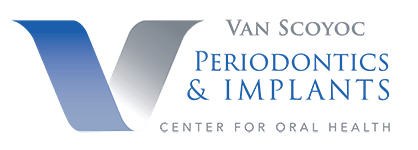Published: 08/17/2023

One of the most important things we can do for our overall health is keep our teeth and gums healthy. Daily habits like brushing and flossing and regular visits to your dentist for checkups aren’t just about filling cavities or preventing gum disease. Keeping teeth and gums healthy also:
- Prevents tooth loss, which can lead to malnutrition and issues with speech
- Avoids pain and discomfort
- Promotes self-confidence
- Prevents other work, school, and personal issues
So, knowing how to best care for the teeth and gums is vital. Here are some of the best practices to keep your mouth healthy.
Brush to Keep Teeth and Gums Clean
Most of us know we should brush our teeth at least twice a day. This practice removes plaque and bacteria, which can build up and lead to tooth decay. It also helps keep the mouth clean and fresh. That said, many people don’t realize the importance of the proper tools and techniques.
The toothbrush should have soft, rather than hard or medium, bristles to remove plaque without damaging the tooth enamel and gums, which can increase tooth sensitivity and gum erosion. While you can effectively brush your teeth with a regular toothbrush, electric toothbrushes have been found to be more efficient and effective. As a bonus, many have a built-in timer to remind you to focus on each quarter of the mouth for a full 30 seconds before moving on to the next, so you brush for at least 2 minutes and hit every tooth.
Avoid using a back-and-forth “sawing motion” and instead brush using small circles on each tooth. Again, you can find electric toothbrushes that have the proper motion built right in.
Remember that toothbrushes don’t last forever. To ensure you’re properly brushing, replace your toothbrush or toothbrush “head” every three months or as soon as you start to notice the ends look frayed.
Prevent Cavities with Fluoride
Fluoride is a natural mineral found in soil and many foods and drinks (in small amounts), like black tea, coffee, shrimp, and raisins. It’s often used in toothpaste and oral rinses to help prevent cavities. While you can find oral products that avoid fluoride, recent research suggests brushing and flossing without fluoride isn’t effective at preventing cavities. So, one of the most important ways to help prevent cavities is to choose a toothpaste (and/or an oral rinse) that contains fluoride.
Don’t Forget to Floss
Many Americans neglect flossing daily, with up to 20% forgetting to ever floss. Some people consider it time-consuming or unpleasant. And some don’t think it makes much of a difference. However, research has found flossing is very much worth the effort as it removes the plaque and bacteria from between the teeth and around the gums where toothbrush bristles can’t reach. Flossing also removes the debris from between teeth that can cause bad breath.
While many people admit to using other “tools” to remove food caught between teeth, such as a fingernail, folded paper, or utensil, these can damage teeth and lead to pain. Instead, use traditional dental floss, dental picks or brushes, or a water flosser designed for this purpose. Water flossers can be especially helpful for people with braces, bridges, or other dental work, as they allow you to hit hard-to-reach areas.
Schedule Regular Dental Checkups
Even if you regularly brush and floss, experts recommend scheduling appointments every six months to a year, so your dentist can check your teeth and your hygienist can remove plaque buildup and hardened tarter. Early detection of problems like cavities, gum disease, cancer, and other oral issues may help prevent pain and expensive procedures.
Consider Using Mouthwash
To ensure your teeth are clean and your mouth is fresh, brushing and flossing are most important. On top of that, some quality mouthwashes that contain chlorhexidine or essential oil can complement the above best practices to help fight bad breath and gum disease and potentially help control plaque. Work with your dentist to find the best mouthwash for you and your mouth. Beware, though, as some mouthwashes that contain alcohol can make issues worse by drying out the mouth and interfering with the beneficial bacteria that are vital to a healthy mouth.
Don’t Smoke
Among the many negative effects of smoking, it damages the immune system, which can prevent healing. That includes healing of the delicate tissues in the mouth. Not only can this increase the risk of oral cancers, but it can increase the risk of gum disease, make it more difficult to heal after dental procedures, and even increase the number of cavities and dramatically increase the risk of losing teeth.
Smoking also, of course, impacts your looks, as your teeth yellow and decay, your tongue and lips become discolored or wrinkled, and your breath chronically smells of stale cigarettes. Smoking also dulls your sense of taste and smell over time.
Watch Out for Sugars and Starches
A diet high in sugars and refined carbohydrates, such as candy, desserts, crackers, chips, and other processed foods, can significantly impact the health of the teeth. The recommendation for a healthy diet limits sugars to below 10% of your calories. Yet lower levels of sugars may be even more beneficial for helping reduce the risk of cavities and other issues (5% or less).
This is even more true of sugar-sweetened beverages—the primary source of added sugars in the standard U.S. diet. Regular consumption of sodas, juices, sweet teas, and other sugar-laden drinks increases the risk of cavities.
To indulge your sweet tooth, choose to fiber-rich fruits (like cherries, berries, and stone fruits) and vegetables (like carrots, snap peas, and sweet potatoes). And keep your body hydrated by drinking plenty of water and unsweetened teas (black, green, or herbal).
A healthy mouth is key to a healthy body. These best practices for healthy teeth and gums can help reduce the risk of cavities, tooth pain, gum disease, and more.
Talk to Us About an Appointment